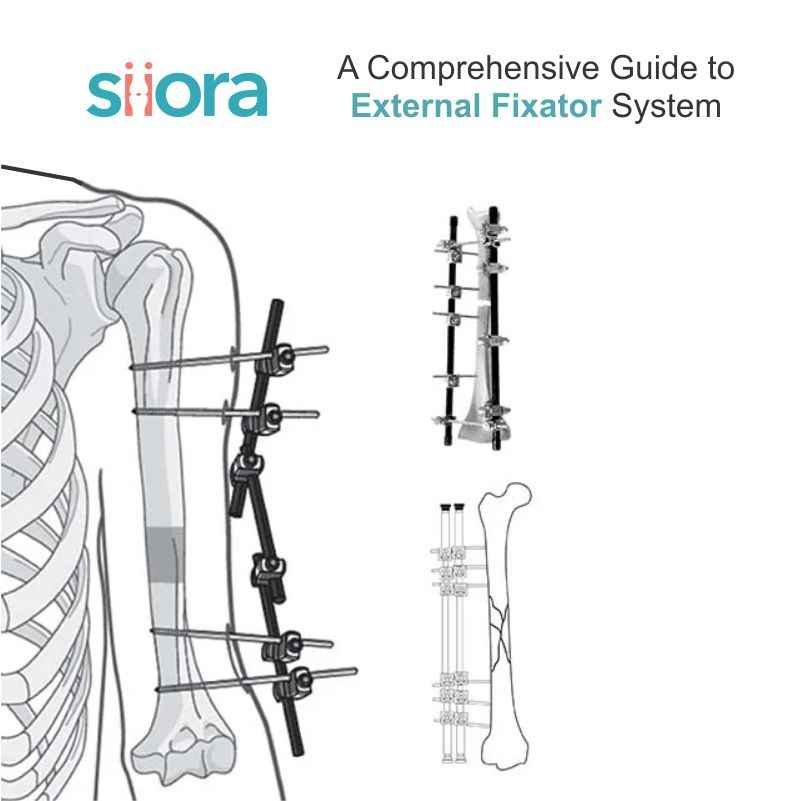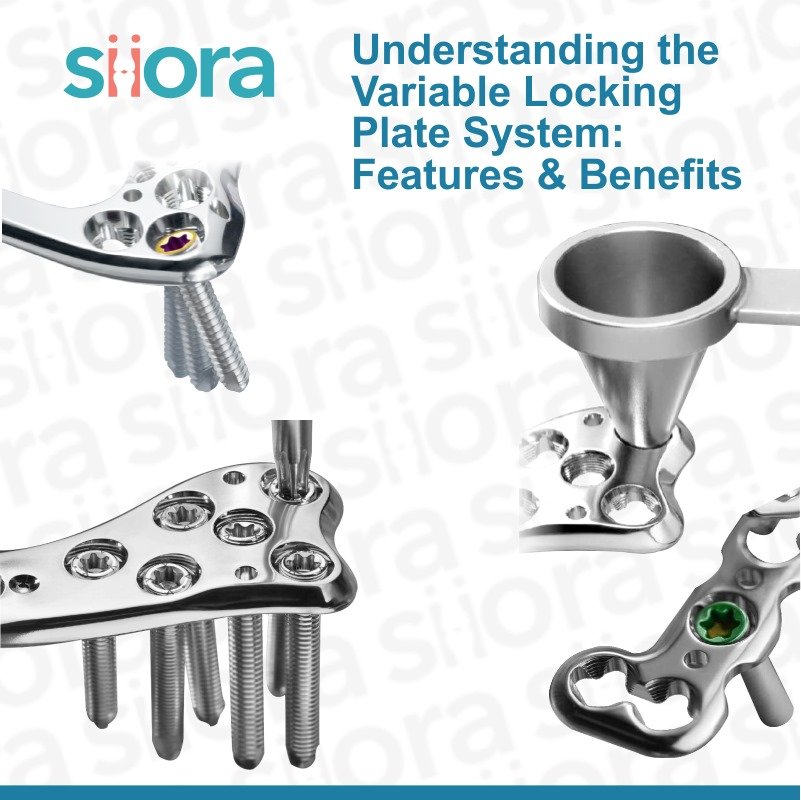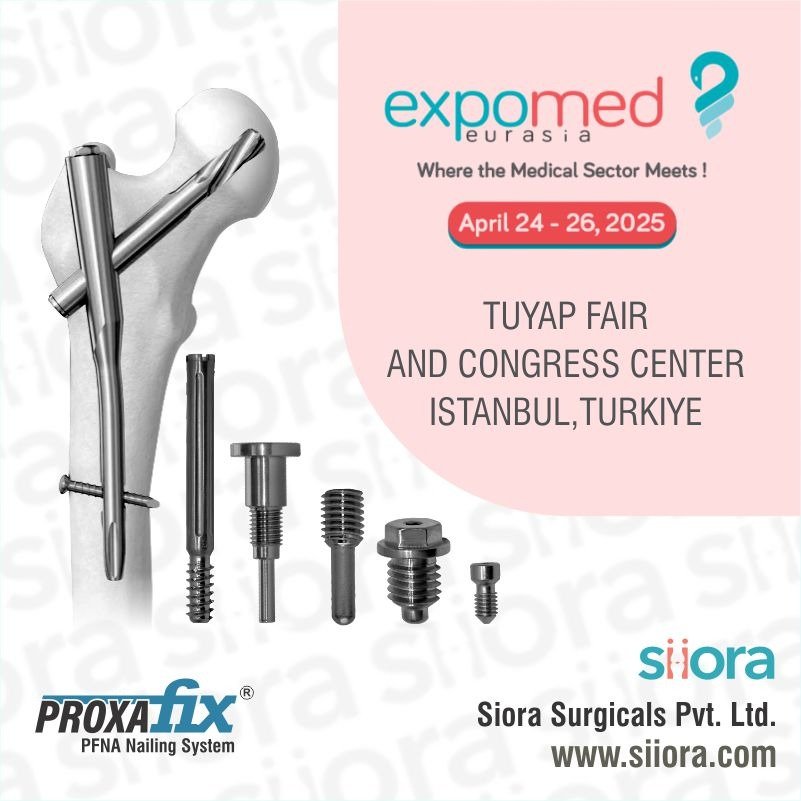The skeleton gives structure to the human body and provides the base of movement we perform during various activities. Any injuries like fractures occurring to any of our bones affect the movement in that area. When fractures occur, particularly complex ones, traditional methods using casts or orthopedic locking plates might not be the most suitable solution. This is where external fixators come in, a unique and versatile tool in the orthopedic surgeon’s arsenal. In this blog, we will have a detailed look at the external fixator system.
What is an External Fixator System?
An external fixator system is a medical device used to stabilize and align fractured or broken bones. Unlike traditional casts or plates that are placed inside the body, an external fixator is applied externally, meaning it sits outside the skin. There are three main components of the external fixator system:
Pins or wires
These thin, threaded metal pins or wires are inserted directly into the bone fragments on either side of the fracture.
Rods or bars
These rigid rods or bars connect the pins or wires, creating a stable framework outside the body.
Clamps
Clamps secure the pins or wires to the rods, allowing for adjustments in bone alignment as needed during the healing process.
What Are the Types of External Fixators?
External fixators come in various designs depending on the type and location of the fracture. Some of the common types of external fixators include:
Unilateral fixator
This is a single-sided fixator used for simpler fractures where stability can be achieved with pins or wires inserted from one side of the bone.
Bilateral fixator
This is a double-sided fixator used for more complex fractures where pins or wires are inserted from both sides of the bone for enhanced stability.
Circular fixator
This type of fixator encircles the entire bone fragment, providing the most rigid form of stabilization. It’s commonly used for complex fractures, bone deformity correction, and limb lengthening procedures.
Hybrid fixator
This combines elements of different fixator types, offering flexibility in addressing specific fracture patterns.
What Are the Advantages of External Fixator Systems?
External fixators offer several advantages over traditional methods, particularly for complex fractures:
Minimally invasive
Surgery for applying the fixator is less invasive compared to open surgery for plates and screws. This translates to quicker recovery times and less soft tissue damage.
Precise alignment
External fixators allow for adjustments in bone alignment during the healing process, which can be crucial for achieving optimal outcomes.
Reduced infection risk
Since the fracture site remains open, it allows for easier cleaning and reduces the risk of deep surgical site infections.
Early mobilization
Patients can often begin physical therapy exercises earlier with an external fixator. This promotes faster healing and prevents stiffness.
Limb lengthening
Certain types of external fixators can be used for limb lengthening procedures, which is not possible with traditional methods.
What Are the Disadvantages of External Fixators?
While beneficial in many cases, external fixators also come with some drawbacks:
Bulkiness and Discomfort
The external frame can be bulky and cumbersome. This impacts daily activities and sleep. One needs to adjust accordingly while sleeping or moving around whenever required.
Pin Site Care
Maintaining proper hygiene around the pin sites is crucial to prevent infection. Strictly follow the instructions given by the surgeon.
Potential for Pin Loosening
Over time, pins or wires might become loose. In such events, the patient needs to visit the doctor for pin adjustment or replacement.
Social Stigma
The external frame remains visible and this might cause self-consciousness in some patients. In such cases, counseling may help.
Who May Require the Application of an External Fixator System?
The decision to use an external fixator depends on several factors, including:
Type and severity of the fracture
Complex fractures, open fractures, and fractures with significant bone displacement often benefit from external fixators.
Patient’s overall health
Patients with medical conditions that increase infection risk or compromise bone healing might not be suitable candidates.
Bone location
External fixators are more commonly used for fractures in the limbs, pelvis, and jaw.
How an External Fixator System is Applied?
The application of an external fixator typically involves the following steps:
Pre-operative planning
The doctor will use X-rays and CT scans to determine the most appropriate type of fixator and placement of pins or wires.
Anesthesia
The procedure can be performed under general, regional, or local anesthesia depending on the complexity of the fracture and the patient’s preferences.
Pin or wire insertion
Small incisions are made, and the pins or wires are inserted into the bone fragments under fluoroscopic guidance for precise placement.
Rod or bar attachment
The rods or bars are then attached to the pins or wires using clamps, creating a stable external frame.
Post-operative care
The patient receives instructions on pin site care, pain management, and physical therapy exercises.
How Recovery is Like with External Fixator System in Place?
Living with an external fixator can take some adjustment. The frame might initially feel bulky, and pin site care becomes a daily routine.
Recovery with an external fixator often allows for earlier movement compared to casts, promoting faster healing and preventing stiffness. Physical therapy plays a key role in regaining strength and flexibility. The duration you wear the fixator depends on the fracture’s severity, typically weeks to months. Regular doctor visits are crucial for monitoring progress and making adjustments as needed. Patience and following your doctor’s instructions are key to a successful recovery with your external fixation.
About Siora Surgicals
Siora Surgicals Pvt. Ltd. is a leader in manufacturing and supplying a CE-certified range of orthopedic implants globally. The company also manufactures external fixator systems using medical-grade stainless steel and titanium. Siora has an in-house production facility based in RAI District, Sonepat, Haryana (India). With an experience of 30+ years and clients served in 50+ countries, the company is also looking to become a reliable supplier of orthopedic implants in Turkiye. For that, it is open to queries about becoming an orthopedic distributor in Turkiye. Above all, Siora is also a world-class OEM/contract manufacturing service provider in the world.








